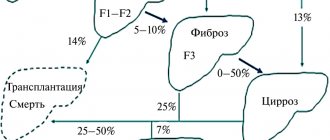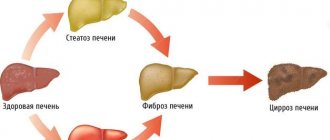Excess iron
An overdose of iron in a healthy person is quite difficult to achieve as part of a normal diet. Iron is a rather ungrateful mineral component and is only absorbed to a small extent.
Additionally, many other food ingredients can effectively prevent this. We are talking about black tea, coffee, products containing calcium, phytic acids, fiber or polyphenols, which are almost impossible to get rid of.
This looks a little different with iron supplements. A large dose of the element is concentrated into a small tablet that is easy to swallow. Supplement overdose can result from taking too much or too many different medications, most of which contain iron.
In a healthy person, a situation in which the body cannot cope with excessive iron intake is unlikely, including due to natural protective mechanisms. This is an HFE protein that blocks the absorption of iron in the intestines when levels are high. Specific genes are responsible for its production.
Unfortunately, there are people for whom these mechanisms do not work properly. These people suffer from hemochromatosis.
Hemochromatosis is a genetically determined disease. Serious symptoms occur when there is a significant excess of iron in the tissues and hemochromatosis is detected only after 30-40 years. In women, the first symptoms of the disease and its detection may occur even later.
Why does the level of iron in the body go through the roof?
Guests
Leonid Lazebnik professor, doctor of medical sciences, therapist of the highest category, president of the Scientific Society of Gastroenterologists of Russia
Maria Vasilevskaya:
On air, “Medical Examination” is a diagnosis of our healthcare, the temperature of public opinion, pressing issues and useful advice. It’s bad when the body lacks iron, it’s even worse when this microelement is in excess, excessive accumulation of iron, hemochromatosis, leads to the most unenviable consequences: cirrhosis, diabetes mellitus, hormonal imbalance - so why does the iron level begin to go off scale, is it possible to stop this process and who is at risk? These and other questions will be answered by a therapist of the highest category, Doctor of Medical Sciences, Professor, President of the Scientific Society of Gastroenterologists of Russia Leonid Borisovich Lazebnik. Hello, Leonid Borisovich!
Leonid Lazebnik:
Hello!
Maria Vasilevskaya:
Why does the level of iron in the body go off scale?
Leonid Lazebnik:
After all, iron is contained in our red blood cells...
Maria Vasilevskaya:
So…
Leonid Lazebnik:
And if excessive breakdown of red blood cells begins, it does not have time to be absorbed.
Maria Vasilevskaya:
Why does it start?
Leonid Lazebnik:
Some kind of intoxication, some kind of anemia, so if a person has anemia, this does not mean that he has little iron in his body, it breaks down in red blood cells and is not absorbed and settles in other places - this is the first thing. Secondly, there are such congenital conditions: some enzymes begin not to repel iron in the duodenum, but to absorb it, and it enters the blood and then begins to be deposited in a variety of organs, the most accumulative organ for the body is the liver, on the left side it is healthy liver.
Maria Vasilevskaya:
The pink one is cute.
Leonid Lazebnik:
Yes, there are these pink liver cells - these are healthy cells, they accumulate a normal amount of iron, they retain it, but on the left is the liver affected by hemochromatosis, you see, there is a lot of fat there...
Maria Vasilevskaya:
Rusty liver.
Leonid Lazebnik:
Yes, fatty liver and, secondly, there are black inclusions there in an asymmetrical order, sometimes even in stripes - these are inclusions of iron, this is called hemochromatosis.
Maria Vasilevskaya:
How does iron get into the human body anyway? We don’t eat nails, do we?
Leonid Lazebnik:
We eat, firstly, enough foods that contain iron, first of all, of course, this is meat, this is buckwheat and some other types, mainly meat and buckwheat.
Maria Vasilevskaya:
Apples probably “rust”?
Leonid Lazebnik:
Not all apples: sour apples, especially those in the skin, contain iron, of course.
Maria Vasilevskaya:
How can I tell? It’s probably obvious from some symptoms: should I eat sour apples or not, how can I tell?
Leonid Lazebnik:
No, you and I can’t understand that, several studies need to be carried out: if we are talking about a serious condition, what is called “bronze” diabetes or “bronze” disease or hemochromatosis, it begins to be deposited not only in the liver, but also in the skin tissues, and the person “turns bronze”, which is why it is called “bronze” disease.
Maria Vasilevskaya:
That is, he appears to have a tan, although he has not tanned?
Leonid Lazebnik:
Yes, and one of the reasons for the increase in sugar may be the so-called “bronze” diabetes or hemochromatosis, but first the person still changes skin color.
Maria Vasilevskaya:
So this is the most important sign?
Leonid Lazebnik:
Yes, it seems that she is tanned and looks great, but symptoms of cirrhosis appear: weakness, peripheral neuropathies, memory impairment. First, the liver enlarges, then it begins to decrease in size, and here two substances need to be examined: ferritin is an indicator of the accumulation of iron in the body and transferrin is a protein that transports iron.
Maria Vasilevskaya:
Do you need to donate blood for transferrin, as you said?
Leonid Lazebnik:
Yes, you need to donate blood. There is appropriate treatment, firstly, traditionally bloodletting.
Maria Vasilevskaya:
Are these leeches or the old fashioned way, like in the Middle Ages?
Leonid Lazebnik:
No, a needle is inserted, excuse me, I’ll show you on myself, 150 or 200 milliliters of blood are released here like this - this is generally a reliable method of treatment that came to us from time immemorial, but it is a reliable method of treatment: excess blood and excess iron are removed.
Maria Vasilevskaya:
As a donor, right?
Leonid Lazebnik:
Yes, but they just pour it out.
Maria Vasilevskaya:
How often do they do this type of bloodletting?
Leonid Lazebnik:
From once a month to once every 3 months.
Maria Vasilevskaya:
If a person has high iron levels and does nothing, what will happen in the end?
Leonid Lazebnik:
It will end sadly, of course.
Maria Vasilevskaya:
Cirrhosis?
Leonid Lazebnik:
It will end in liver failure, cirrhosis of the liver. There are 3 drugs, 2 of them are very powerful, but toxic, the third drug is much softer - it is a hydrolyzate of the human placenta, it works very reliably, by the way, this is both a Japanese and our achievement.
Maria Vasilevskaya:
So this disease can simply be treated with medication?
Leonid Lazebnik:
This disease can be treated with medication, there is no need to be afraid, but first of all, first of all, do not be scared, do not panic, find an intelligent doctor...
Maria Vasilevskaya:
And get treatment.
Leonid Lazebnik:
To repair our cars, we don’t go to the first auto repair shop on the corner, we will find something that inspires confidence in us, and a doctor, find a smart doctor who would not rush to do bloodletting if necessary, yes, if there is a lot of excess blood, it will be necessary to release it, but then you will need drugs that remove iron, either block its absorption, or act gently so that you will not notice anything, and the level of ferritin in your blood will be normal.
Maria Vasilevskaya:
What preventive measures would you recommend to our viewers to prevent excess iron in the body?
Leonid Lazebnik:
Firstly, if you have anemia, you should definitely get it checked, because there are types of anemia...
Maria Vasilevskaya:
What is anemia?
Leonid Lazebnik:
Anemia: if red blood cells disintegrate excessively in the body, then you need to remember that this iron can be deposited in the liver and pancreas. Second: you don’t need... you just want to say: “Gobble up all the multivitamins in a row,” but if your body doesn’t need anything, why eat it, what the body wants, it will ask for itself, if it wants black caviar, buy 2-3 eggs...
Maria Vasilevskaya:
Unscrupulous organism.
Leonid Lazebnik:
At the end of the day, our eating habits are determined by what our microbiota wants.
Maria Vasilevskaya:
Our intestinal microflora.
Leonid Lazebnik:
Yes, our intestinal microflora means don’t eat too much, but if you have an increase in ferritin in the blood, limit yourself to meat, buckwheat and see what foods contain excess iron.
Maria Vasilevskaya:
If a person has a high iron content in the body, what changes in his lifestyle should he make in order to live better, to live a better quality of life?
Leonid Lazebnik:
If diabetes is, of course, drugs that lower blood sugar levels, various insulins and other glucose-lowering drugs, if it is cirrhosis of the liver, then monitor enzyme levels.
Maria Vasilevskaya:
Listen to your doctor in this matter.
Leonid Lazebnik:
Yes, that is, physical activity, volens nolens, is completely excluded.
Maria Vasilevskaya:
Can't you go for a walk?
Leonid Lazebnik:
I said: physical activity, not physiological, but physical activity, that means no sports, but what is associated with everyday stress, for God’s sake, just please control yourself - you don’t need to put everything in your mouth, including recommended nutritional supplements containing microelements and all sorts of multivitamins that supposedly work, think about it, don’t waste your money.
Maria Vasilevskaya:
Everything is clear, we will listen to the doctors, thank you for this conversation!
Leonid Lazebnik:
Thank you.
Maria Vasilevskaya:
Well, be healthy, it was a “Medical Examination”!
Effects of excess iron
Long-term excess iron can have serious health consequences.
Symptoms of excess iron in the body include drowsiness and fatigue. As with other nutrients, excess iron will also be felt in our digestive tract and vomiting, nausea and diarrhea may occur. Eventually, iron will begin to accumulate in the internal organs and damage them, leading to a gradual loss of function.
A damaged pancreas stops regulating carbohydrate metabolism, which leads to diabetes. Liver cirrhosis, intestinal necrosis, and joint inflammation and pain may occur.
Elevated levels of iron in the blood also contribute to the action of free radicals, which are responsible for the aging of body cells. Therefore, people affected by hemochromatosis are more prone to developing tumors and atherosclerosis.
Causes
Iron, which comes from food, is absorbed in the gastrointestinal tract and settles in certain human organ systems, be it the liver or joints.
The reason for this process may be either the action of a gene that provokes increased absorption of iron, or long-term excessive intake of this element into the body along with chemicals or blood transfusions. Degradation of organs affected by excess iron does not occur immediately, but over time the symptoms only progress.
Products with heme and non-heme iron. Table
Beef contains the most iron among meat types.
How to saturate the body with useful microelements? A table of foods high in iron will help you create a menu.
Please note that if you choose non-heme iron, only 2 to 10% of it will be absorbed, and 35% of heme iron will be absorbed. Amount of iron, mg per 100 g:
Products:
- liver - 20.2
- pork - 6.9
- beef - 17.5
- heart - from 4.1 to 4.8 in different animals
- tongue - 3.2–4.2 in different animals
Meat:
- pork - 1.8
- beef - 3.6
- chicken - 1.6
- turkey - 1.4
- sardine - 2.6
Egg yolk:
How much iron does the body need per day?
- Children and adolescent males need 11 mg of iron per day.
- Men over 19 years of age should receive, on average, 8 mg of iron per day.
Iron deficiency is greatest among women because they eat less red meat, the best source of iron, go on weight-loss diets more often than men, and lose blood during menstruation.
- Girls aged 9 to 13 years should receive 8 mg of iron per day.
- From 14 to 18 years old, 15 mg of iron per day is recommended.
- Women aged 19 to 50 years should provide at least 18 mg of iron per day.
- After menopause, women do not need as much iron (from the age of 50), so their daily requirement is 8 mg.
Iron is an essential mineral needed for proper development of the nervous system and brain.
- Pregnant and breastfeeding women should get about 25 mg of iron per day
- Children of both sexes from one to 8 years of age need 7-10 mg of iron.
Symptoms of iron deficiency
Iron deficiency develops gradually. The body uses metal reserves from depot organs. When they are depleted, symptoms begin to appear:
- excessive fatigue due to normal activity;
- dryness, flaking of the skin;
- brittleness of hair and nails;
- headache;
- decreased appetite;
- dizziness;
- dyspnea.
Iron deficiency is dangerous during pregnancy. For the normal development of the fetus, a lot of microelement is consumed, its reserves are quickly depleted. If iron is not supplied in sufficient quantities, the formation of hemoglobin will suffer. The mother and child will experience oxygen starvation, this adversely affects the development of the fetus.
Iron deficiency related diseases
The causes of iron deficiency are diseases that interfere with the normal absorption of metal at all stages. These include:
- chronic gastritis;
- stomach cancer;
- removal of part or all of the stomach;
- duodenal tumors;
- lack of vitamin C;
- helminthic infestations;
- anorexia;
- chronic blood loss.
Iron deficiency also occurs due to poor nutrition, when a person eats little meat products, fruits and vegetables. Increased iron consumption is observed during pregnancy and breastfeeding.
References
- Federal clinical guidelines for the diagnosis and treatment of iron deficiency anemia, 2015. - 58 p.
- Klochkova-Abelyants, S.A., Surzhikova, G.S. Iron deficiency anemia and anemia of chronic diseases: some aspects of pathogenesis and prospects for differential diagnosis. — Medicine in Kuzbass, 2022. — No. 3. — P.25-28.
- Tiglis, M., Neagu, T., Niculae, A. et al. Incidence of Iron Deficiency and the Role of Intravenous Iron Use in the Perioperative Period, 2022. - Vol. 56(10). - P. 528.
Treatment
Hemochromacy does not occur on its own, but is provoked by certain risks that the patient should be aware of, be it heredity or frequent blood transfusions. If you notice the first symptoms, you should consult an endocrinologist, since delaying treatment leads to a worsening of the body’s condition.
During the treatment process, the endocrinologist prescribes a special diet to the patient, which excludes foods rich in iron from the diet, including apples, beets, buckwheat, red meat, red grapes, and pomegranates. Any alcoholic drinks are excluded; moreover, alcoholism itself causes hemochromatia.
Excess blood is treated through drug therapy prescribed by a doctor. Another effective way to combat this disease is periodic bloodletting, which also must be carried out under the close supervision of a doctor, as the level of hematocrit and hemoglobin in the blood should be monitored.
Complexes with this research
Examination during pregnancy.
1st trimester 17,040 ₽ Composition Blood biochemistry. 19 indicators Advanced biochemical blood test 6,430 ₽ Composition
Women's check-up No. 1 38 studies for annual preventive examination 19,720 ₽ Composition
IN OTHER COMPLEXES
- Men's check-up No. 1 RUB 18,920
- Causes of hair loss RUB 2,550
- Pregnancy planning. Clinical indicators 6,800 ₽
- Biochemistry of blood. 8 indicators 990 ₽
- Examination during pregnancy. 3rd trimester 9,840 RUR








